There are two mammals, or perhaps broadly groups of mammals, that exemplify Halloween. One is the black cat. The other is the bat. Bats have a long history in human folklore, tradition, and fictional literature and cinema. In North America, the Creek, Cherokee, and Apache viewed the bat as a trickster god. In Aztec mythology they were associated with dead, destruction, and decay. The witches brew in Macbeth called for ‘wool of bat’ and bats have of course been long associated with vampire folklore (although when most of us think of vampire folklore, we think of that which originated in Central and Eastern Europe even though the vampire bats of the subfamily Desmodontinae are endemic to the Americas!). And of course, in modern comics, television, and cinema, there is the ‘Dark Knight’, Batman. There are some cultures that see or have seen the positive in bats, however, such as those in parts of China, Tonga, and in the Mesoamerican Zapotec civilization. Toy bats are not uncommon, especially as novelties around Halloween time. However, for those of us that like to collect quality replicas identified to the genus or species level, bats haven’t gotten the attention of other mammals, such as carnivores, ungulates, and cetaceans, even though they are the second largest group of mammals after rodents (another group often neglected in toy/figure form), with over 1,400 described species. In 1996 Play Visions released a set of six species of bats, one of several taxonomically-themed sets produced by them in the 1990s. They were probably manufactured by Wing Mau, who made a lot of the figures of that era that were marketed by Play Visions, Club Earth, and others. I will be covering the six species individually, in no particular order. Each species will have bulleted information on their geographic distribution, habitat, diet, IUCN status, size and scale, frequency in toy/figure form, and notes, where appropriate. Each will be accompanied by one diorama-style image. This review is intended to be a general overview of the set as a whole and does preclude future in-depth blog reviews of individual figures.

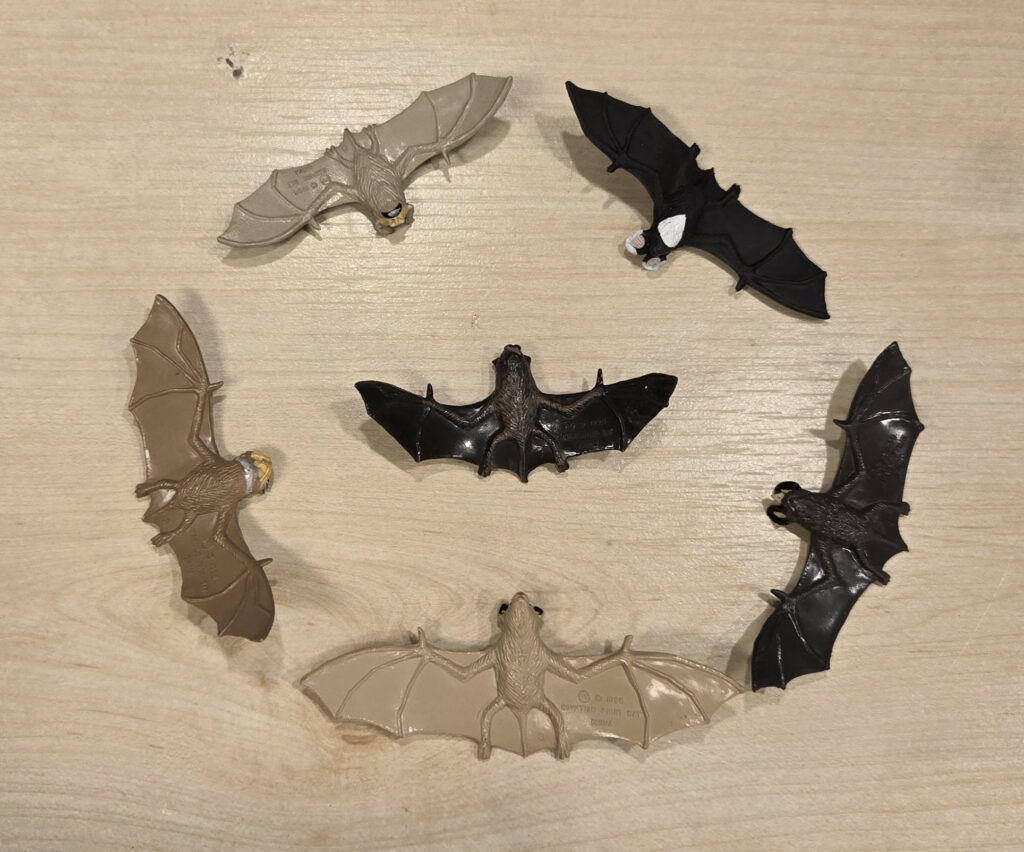
Spotted Bat, Euderma maculatum
- Geographic distribution: Western North America
- Habitat: Ponderosa pine forest, marshland, deserts, shrub-steppe, agricultural land
- Diet: Flying insects
- IUCN Status: Least Concern
- Size and scale: Wingspan 8.1 cm. Body length approximately 3.0 cm for a scale of 1:4
- Frequency of species in toy/figure form: Unique
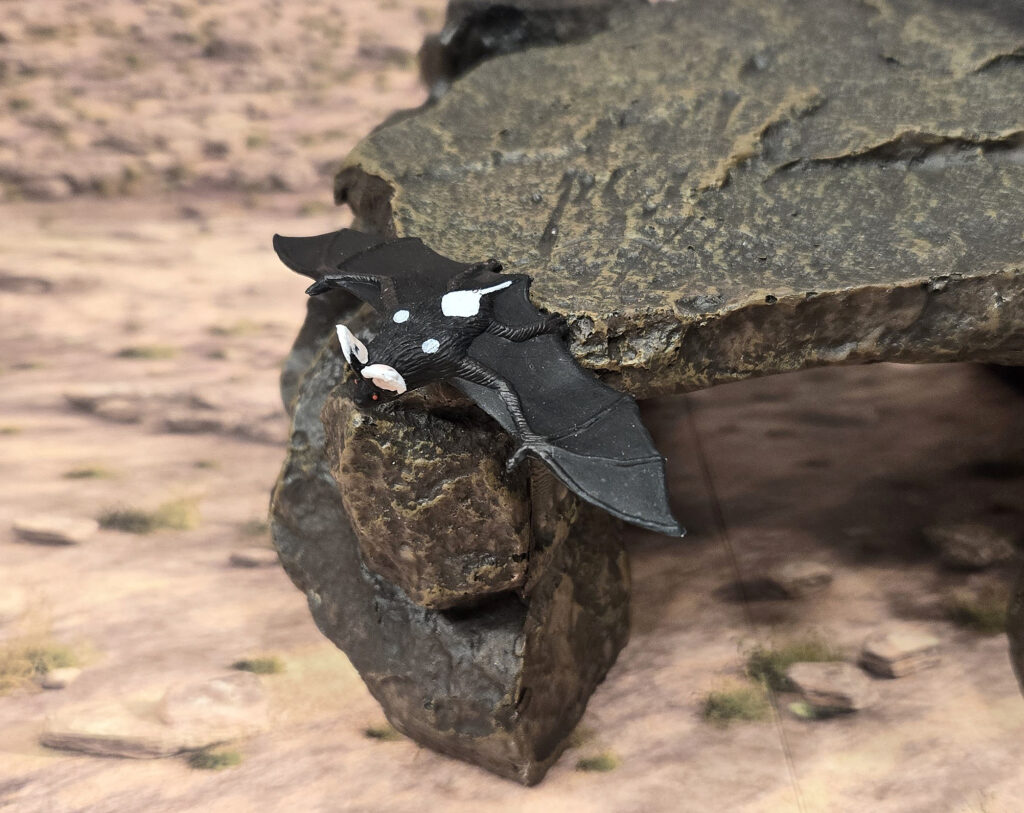
Wrinkle-faced Bat, Centurio senax
- Geographic distribution: Central America and northern South America, from Mexico to Venezuela, Colombia, Trinidad and Tobago
- Habitat: Dense, second-growth tropical evergreen and deciduous forests
- Diet: Fruit
- IUCN Status: Least Concern
- Size and scale: Wingspan approx. 8.7 cm. Body length approx. 3.2 cm for a scale of 1:1.8-1:2.2
- Frequency of species in toy/figure form: Unique
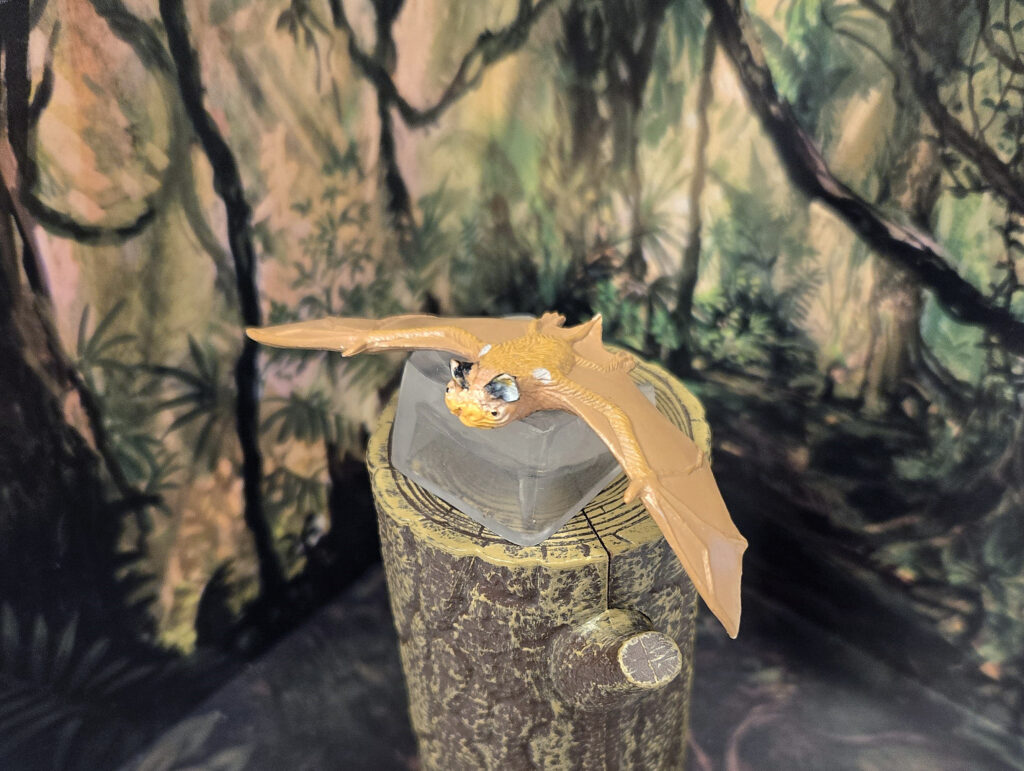
Egyptian Fruit Bat, Rousettus aegyptiacus
- Geographic distribution: Egypt, sub-Saharan Africa, coastal Arabian Peninsula
- Habitat: Rainforests, tropical deciduous forests, tropical savanna, Mediterranean scrub forest
- Diet: Fruit
- IUCN Status: Least Concern
- Size and scale: Wingspan 9.5 cm for a scale of 1:6.3
- Frequency of species in toy/figure form: Unique

Common Vampire Bat, Desmodus rotundus
- Geographic distribution: Central and South America, from Mexico to Uruguay, northern Argentina, and central Chile, also Caribbean Islands Margarita and Trinidad
- Habitat: Tropical and subtropical woodlands, grassland, savanna
- Diet: Mammalian blood
- IUCN Status: Least Concern
- Size and scale: Wingspan 7.7 cm. Body length approx. 3.7 for a scale of 1:2.4
- Frequency of species in toy/figure form: Rare to unique, depending on species assigned (see below)
Notes: This figure was only marketed as a vampire bat and could represent any member of the subfamily Desmodontinae. The ID of the common vampire bat is community-based and I accept it.
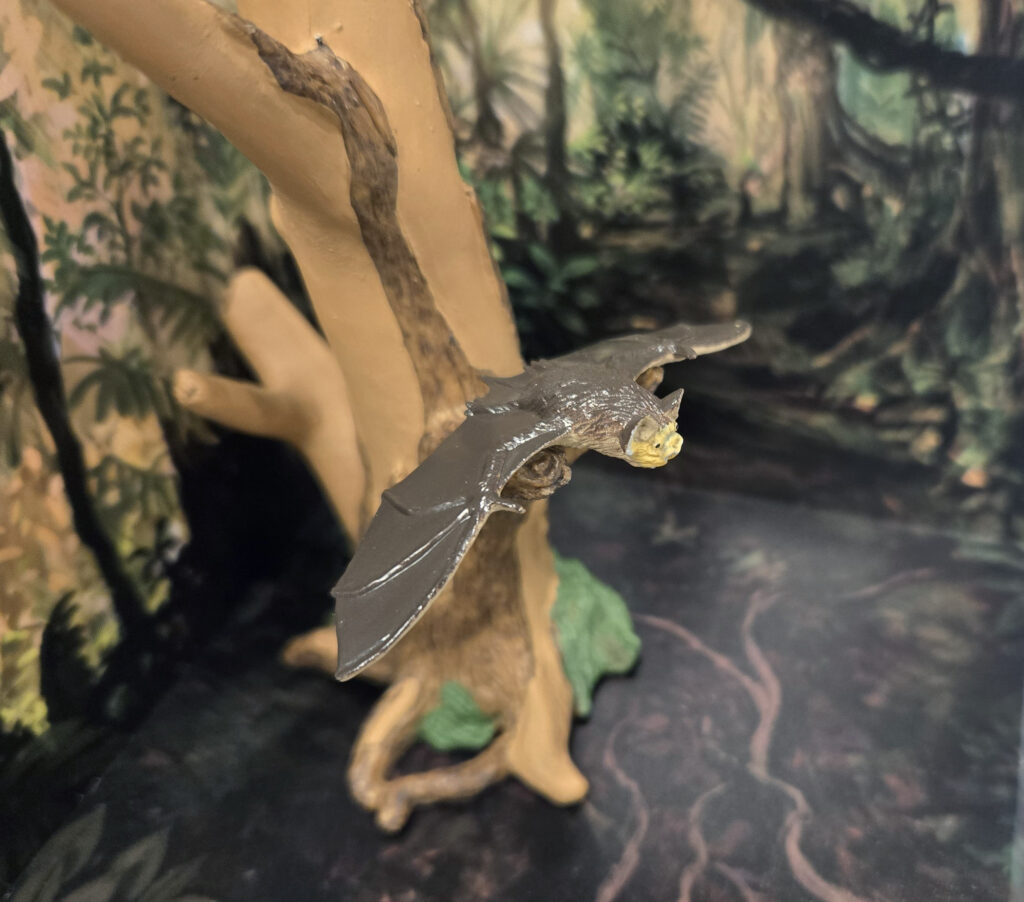
California Leaf-nosed Bat, Macrotus californicus
- Geographic distribution: Southwestern USA and northwestern Mexico
- Habitat: Sonoran and Mohave desert and desert scrub
- Diet: Insects; a gleaning insectivore, meaning it captures prey off the ground or on plants rather than in the air
- IUCN Status: Least Concern
- Size and scale: Wingspan approx. 8.5 cm. Body length approx. 3.3 cm. The proportions of this figure are probably not right. Using wingspan as a metric, the scale comes to 1:3.5 but using body length it comes to 1:1.8, suggesting the body is too long in relation to the wingspan.
- Frequency of species in toy/figure form: Unique
Notes: This figure was marketed as a leaf-nosed bat, which could be any one of many members of the family Phyllostomidae. The ID of the California leaf-nosed bat is community-based and I accept it.

Horseshoe Bat, Rhinolophus sp.
- Geographic distribution: Africa, Asia, Europe, and Oceania (incl. Australia)
- Habitat: Varies greatly by species, and can occur in both forested and unforested habitats, usually in tropical and subtropical areas
- Diet: Insects and other arthropods; gleaning insectivore (see above)
- IUCN Status: Varies based on species
- Size and scale: Wingspan approx. 8.0 cm. Body length approx. 3.2 cm for a scale of 1:1.1-1:3.1 depending on the species.
- Frequency of species in toy/figure form: Rare to unique depending on species assigned (see below)
Notes: This figure was only marketed as a horseshoe bat, which includes over 90 species in the genus Rhinolophus. I have marketed mine as the lesser horseshoe bat (R. hipposideros) as I already have a figure of the greater (R. ferrumequinum) by Kaiyodo. At the time of this writing, Toy Animal Wiki has it listed as the greater horseshoe bat, but really it’s up to the individual collector.
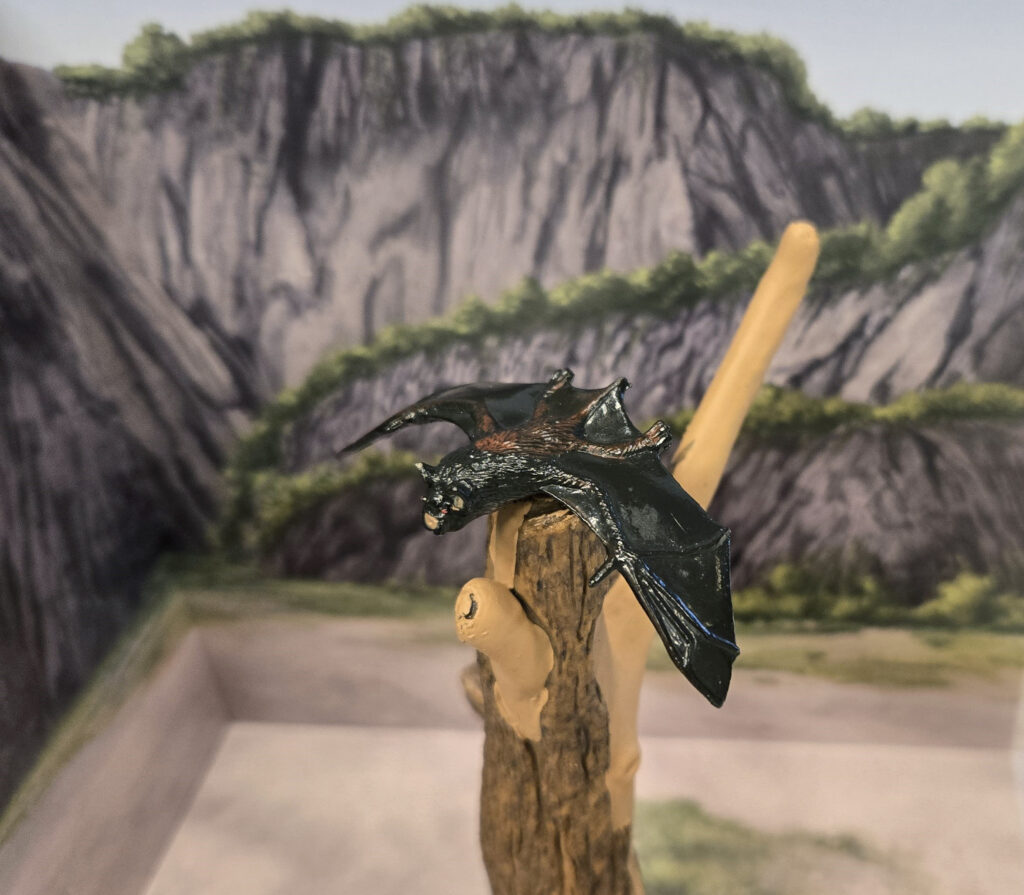
In closing, the Play Visions Bats collection gives collectors an opportunity to get six interesting species of bats, four of which are to date still unique for their respective species, and depending on the species a collector decides to assign to the vampire and horseshoe bats, all six could be unique. They are a bit crude by today’s standards, but they are all unique sculpts (none are repainted versions of others) and display unique traits for their respective species. Play Visions figures are long retired, but pop up periodically on eBay and other second-hand sites, and the bats can be more commonly found than some others (e.g, the prosimians or prehistoric amphibians). Hope you enjoyed the review. Until next year, Happy Halloween!
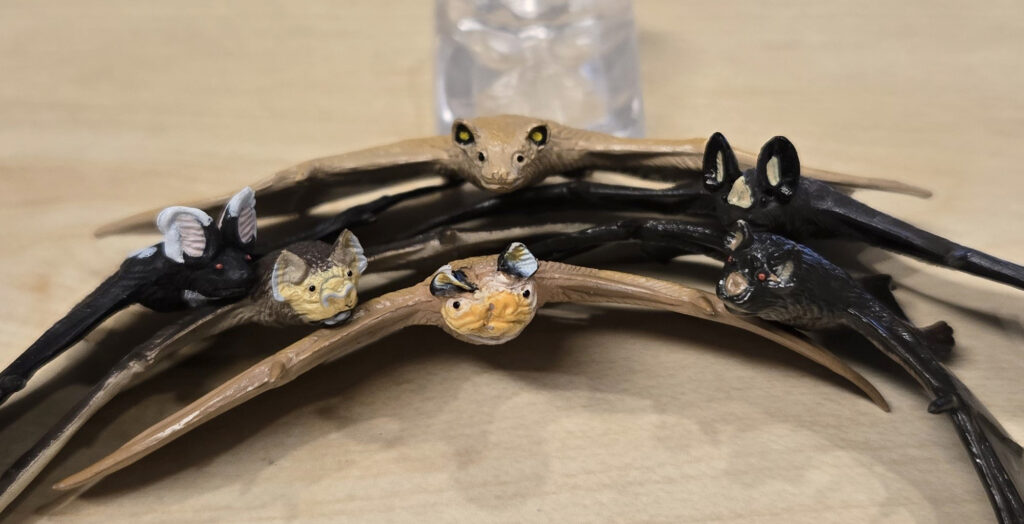
Disclaimer: links to Ebay and Amazon on the AnimalToyBlog are affiliate links, so we make a small commission if you use them. Thanks for supporting us!



